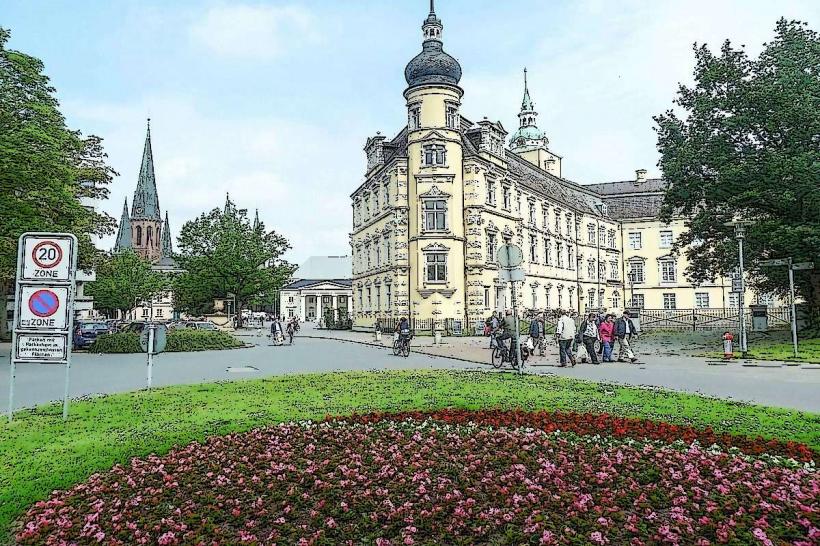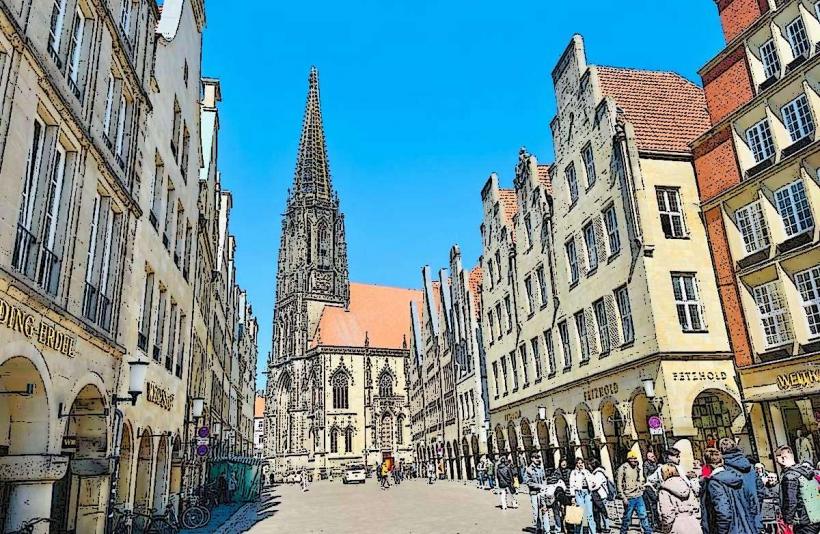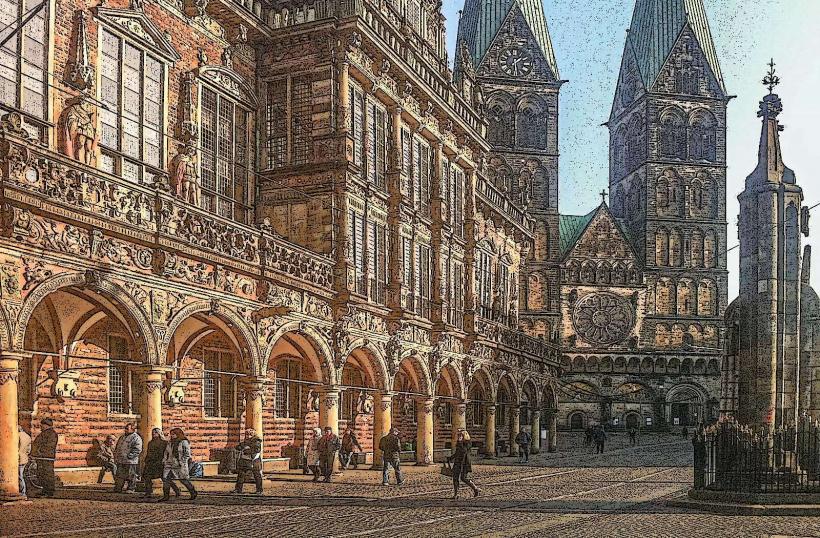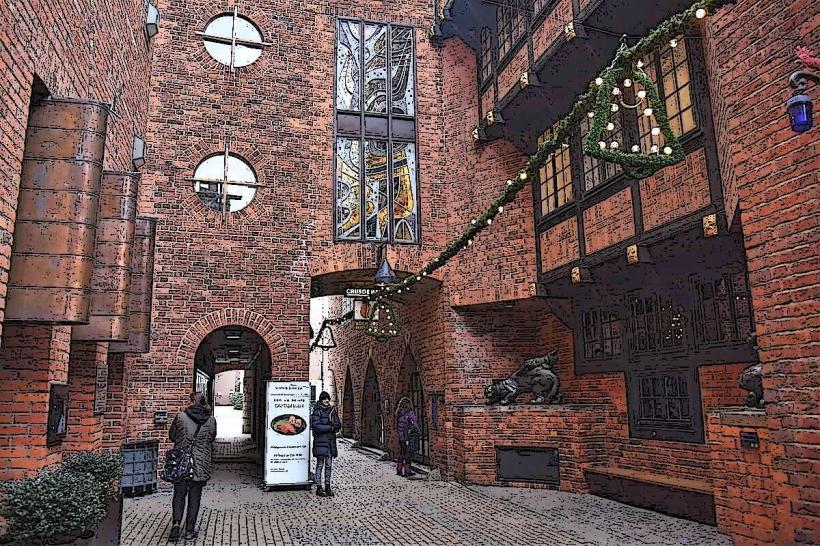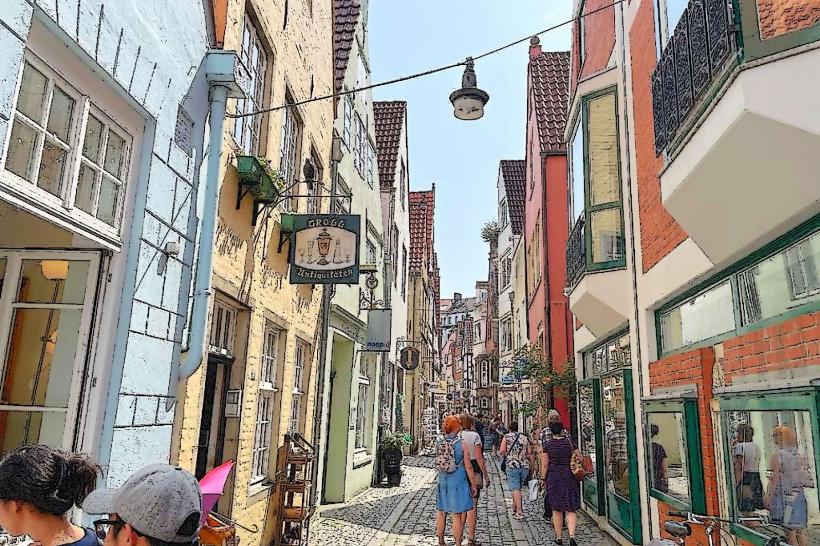Information
Landmark: Saint Peters CathedralCity: Bremen
Country: Germany
Continent: Europe
St. Peter's Cathedral (Bremer Dom), located in the heart of Bremen’s Old Town, is one of the most significant landmarks in the city, both architecturally and historically. It is a striking example of medieval architecture and a testament to Bremen’s rich religious and cultural heritage. The cathedral has played an important role in the history of the city and continues to be a place of worship and pilgrimage today.
Historical Background
Early History
- The site of St. Peter's Cathedral has been a place of worship since the early medieval period. The original church was likely built in the 8th or 9th century, though there are no remaining structures from this time.
- The current cathedral was constructed between the 11th and 13th centuries, and it was consecrated in 1230. The cathedral was initially built in the Romanesque style, but over the centuries, it underwent significant changes, incorporating elements of Gothic architecture.
Construction and Renovations
- The construction of the cathedral began in the Romanesque style, with a basilica plan and large, rounded arches. As the cathedral grew in importance, the design evolved into a more intricate Gothic structure, particularly noticeable in the upper parts of the church, such as the towers and the façade.
- The cathedral underwent several renovations and expansions over the centuries, particularly during the 15th and 16th centuries when the famous towers were completed and additional decorative features were added.
Role in Bremen’s History
- St. Peter’s Cathedral has always been closely tied to Bremen’s civic identity. As Bremen developed into an important trading and Hanseatic city, the cathedral became a symbol of the city’s prosperity and influence.
- Over the centuries, the cathedral has served as a place for royal and civic events, such as the coronation of bishops and dignitaries, and it has witnessed significant historical moments in the city’s development.
- The church survived various challenges, including wars and natural disasters, though it has been carefully preserved and remains one of Bremen’s most important landmarks.
Architectural Features
Exterior Design
- Towers: The most striking feature of St. Peter's Cathedral is its twin towers, which rise dramatically above the city. Standing at 98 meters (322 feet) tall, the towers are visible from much of Bremen and are a key part of the city's skyline. These towers, which were completed in the 13th century, are built in a Romanesque style but also incorporate Gothic elements such as pointed arches and intricate decorations.
- Façade: The cathedral’s façade is a beautiful mix of Romanesque and Gothic architecture, with intricate carvings depicting biblical scenes and figures. The outer walls are adorned with statues of saints, angels, and scenes from the life of Christ, showcasing the religious significance of the church.
- West Entrance: The western portal is one of the most ornate features of the cathedral. It is decorated with sculptural reliefs of Christ, angels, and saints, designed to invoke a sense of awe and reverence as worshippers enter the cathedral.
Interior Design
- Nave and Aisles: The interior of St. Peter’s Cathedral is characterized by its vast, open nave with soaring Gothic arches. The space is filled with light from large, stained-glass windows that depict scenes from the Bible. The cathedral’s design is aimed at creating a sense of verticality, drawing the eyes upwards toward the heavens.
- Vaulting: The ceiling of the cathedral is adorned with a vaulted, ribbed structure that enhances the sense of grandeur. The vaults are decorated with medieval frescoes and patterns, many of which were added during later renovations.
- Chancel: The chancel is where the altar and the high altar stand. It is often adorned with intricate carvings and features a wooden pulpit that adds to the overall beauty of the space.
- Stained Glass Windows: The cathedral’s stained-glass windows are some of the most impressive features of the interior. They date from various periods, with some windows depicting scenes from the Old Testament and others focusing on the life of Christ and the saints. These windows allow colorful light to filter into the interior, creating a peaceful and reverent atmosphere.
Organ
- St. Peter’s Cathedral houses one of the most renowned organs in Bremen, dating back to the 17th century. The organ is still used for regular services and concerts and is a key feature of the cathedral’s music program. Its powerful sound fills the nave and is a source of great pride for the cathedral’s community.
Notable Features and Artifacts
The Bremen Cathedral Treasure (Domschatz)
- The cathedral houses a notable collection of religious relics, manuscripts, and treasures, many of which date back to the Middle Ages. The Domschatz includes items such as ornate chalices, vestments, and liturgical objects used in church ceremonies. Some of these treasures are displayed in the cathedral’s museum.
The Golden Door (Goldene Tür)
- One of the cathedral’s most fascinating features is the Goldene Tür (Golden Door), located on the southern side of the cathedral. This door is adorned with intricate bronze reliefs depicting biblical scenes. The door has long been an important symbol of Bremen’s Christian heritage and is one of the most photographed parts of the cathedral.
The Grave of the Bremen Bishops
- The cathedral also serves as the final resting place for many of Bremen’s bishops. Their tombs are scattered throughout the cathedral, with some being marked by elaborate stone carvings and memorial plaques.
Cultural and Religious Significance
Religious Services
- St. Peter's Cathedral is an active place of worship, offering daily services, regular Eucharist celebrations, and special services for holidays and events. The cathedral has a strong Lutheran presence, reflecting Bremen's Protestant history.
Pilgrimage Site
- Over the centuries, St. Peter's Cathedral has also been a site of pilgrimage. Its relics, historic significance, and beauty continue to attract visitors from around the world. The cathedral's connection to both Bremen’s civic identity and religious life makes it a place of cultural importance for the local community.
Concerts and Events
- In addition to religious services, St. Peter’s Cathedral is an important venue for concerts and cultural events. The cathedral regularly hosts classical music performances, including organ concerts, choral performances, and other events that highlight the rich musical heritage of Bremen.
UNESCO Tentative List
- St. Peter’s Cathedral, along with other important buildings in Bremen, was considered for inclusion on the UNESCO World Heritage list, owing to its historical and architectural significance as a symbol of Bremen’s medieval and religious past.
Visiting St. Peter's Cathedral
Location
- The cathedral is located in the heart of Bremen’s Old Town, near other major landmarks such as the Bremen Town Hall and the Roland Statue, making it easy to include in a walking tour of the city center.
Visiting Hours
- The cathedral is open to visitors daily, with regular services throughout the week. There is no entrance fee for visiting the cathedral, although there may be a small charge for accessing certain areas or exhibits, such as the Domschatz.
Guided Tours
- Visitors can take guided tours of the cathedral to learn more about its history, architecture, and significance. These tours are available in various languages and provide in-depth information about the church’s religious and cultural legacy.
Summary
St. Peter’s Cathedral is a must-see destination in Bremen, offering visitors a deep connection to the city’s past, both religious and civic. Its impressive architecture, artistic treasures, and historical significance make it one of the most important landmarks in the city. Whether you are visiting for a religious service, a concert, or simply to admire its architectural beauty, St. Peter’s Cathedral offers a memorable experience.

